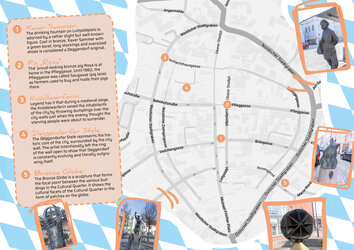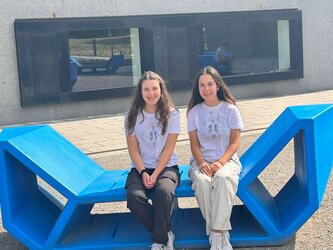
No, this is not a blog about how to behave during a pandemic. Instead, let’s look at how behavior has changed, and has not changed during this pandemic, so far! It’s so easy to focus on all of the negative news, that we often overlook some of the interesting things that have happened in cultures in this relatively short amount of time. This pandemic has managed to change the way we look at culture, and especially interculture, in just a few short weeks. It seems so long ago that we went through lists of what every country was hoarding. The French hoarded wine. The Greek hoarded Feta cheese. The Germans, toilet paper! And then the big analysis, “what does it say about culture?”. Well, it seems that toilet paper was hoarded in most countries that, wait for it, actually use toilet paper!
A long time ago, in 1985 to be exact, a researcher named William B. Gundykunst came up with a theory called the anxiety/uncertainty management (AUM) theory. When asked to explain the theory, he said that, “when individuals’ anxiety and uncertainty are between their minimum and maximum thresholds, they can mindfully try to understand strangers and how strangers are interpreting their messages. In other words, managing anxiety and uncertainty so that they are between minimum and maximum thresholds only lays the groundwork for effective communication. It is what communicators do next that influences whether their communication is effective or not” (Gundykunst, 2003, p.28 1). He argues that we reduce uncertainty by using scripts that are culturally programmed, and that we assume that the other side will understand our messages more clearly.
Why am I brining this up? Well, the world is in the process of changing its cultural scripts. We are trying to find solidarity, and are looking for that by looking at the world as a whole. And suddenly, we are seeing events and instances with a “common language”. So, going back to Gundykunst, if we are currently trying to communicate somewhere between our minimum and maximum thresholds, and trying to reduce anxiety, not only in our societies and cultures, but in the way we all communicate, then it is time to create new cultural scripts, and new intercultural language and dialogue.
Now, going back to our toilet paper hoarders. All this happened in early to mid-March, and as we reach mid-April, it seems like so long ago. As one country after the next went into “lock down”, the priorities changed again. A sense of solidarity began to set in. Suddenly, there was something that we are all staying home for together. The memes started to pop up on Facebook, with phrases like, “now you can be a hero, just by staying on your couch!”. Suddenly, a sense of solidarity with the world, led to a sense of solidarity with our neighbors, our towns, and our regions. And all of this was possible from the comfort of our couch!
To be fair, there are real heroes of this pandemic. From the medical personal at the “front” of this pandemic, to the cashiers at the supermarket, and all the people between, who are going out there to make sure that the heroes on the couch can be exactly that. Heroes on the couch. At home! But, this is where several things seem to have changed in society. And this change seems to have occurred across national, international, religious and many other “boundaries”. We have learned that the real heroes are overworked and underpaid. And there is an appreciation of them that comes with that. The world is starting to reevaluate what jobs are essential and valuable.
We have also realized that, most things are actually possible from our homes, but that this (perceived) comfort comes with a huge price tag, namely human interaction. And that is where we do not, and probably cannot change. We can find ways to bridge distances, teach virtually, meet in rooms provided by various providers, even peek into our coworkers living room, but we cannot replace the comfort and satisfaction of actually seeing and interacting with real humans. And that is something that will likely not even change through a pandemic. We humans need to be near each other. And that is true across society, culture and between cultures. So, we patently wait until we can see each other again in real life, and until then, digitally bridge the distances until we “meet” again.
Prof. Dr. Michelle Cummings-Koether
Prof. Dr. Michelle Cummings-Koether is Professor for Intercultural Management at the European Campus. She loves to look at cultures from various angles and has been blogging about the different facets of this topic for years.
Quellen:
[1] Gudykunst, W. B. (2003). Understanding Must Precede Criticism: A Response to Yoshitake's Critique of Anxiety/Uncertainty Management Theory. Intercultural Communication Studies, 12(1), 25-40.










